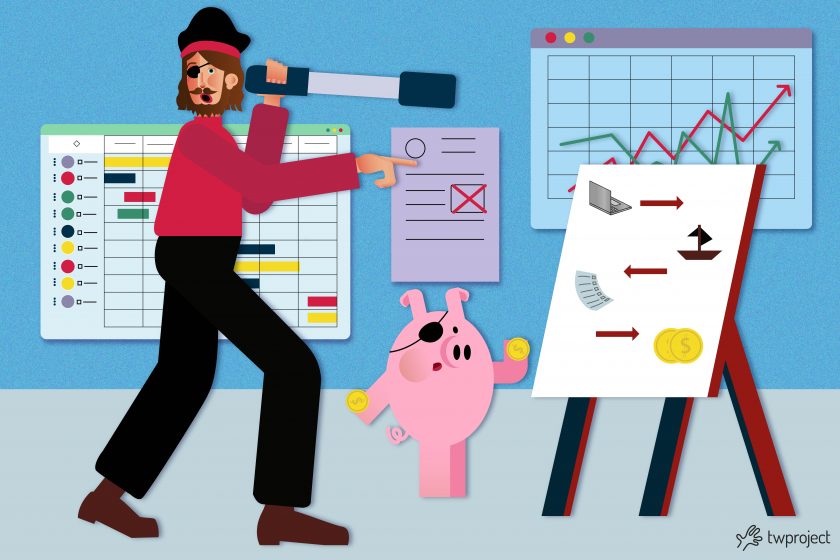Project activity planning can be challenging, with countless tasks to keep track of, team members to manage, and deadlines to meet.
So here’s how having and following best practices can significantly assist in relieving stress and progressing as smoothly as possible.
CONTENT
- 9 best practices for planning activities
- 1.Plan a kick-off meeting
- 2.Ensure your team members communicate effectively
- 3.Be realistic with milestones
- 4.Schedule change requests ahead of time
- 5.Have an orderly documentation process
- 6.Have feedback processes in place
- 7.Regularly review your resource plan
- 8.Planning a final retrospective meeting
- 9.Use a project management tool
9 best practices for planning activities
Sound planning is critical to the success of any project.
In this section, we will discuss nine best practices for better managing your activities and ensuring that the end result meets expectations.
By following these tips, you can optimize resources, improve communication, and increase the chances of overall project success.
1. Plan a kick-off meeting
It may be tempting to begin work right away, especially if schedules are tight. Still, good practice is always to start with a kick-off meeting, which serves as an introductory discussion about the project.
This meeting will be led by the project manager and attended by all relevant stakeholders. Its purpose is to ensure that everyone is aligned on scope and objectives and to discuss the role and responsibilities that everyone will play throughout the project.
During this meeting, define the scope of your project clearly to avoid any future misunderstandings.
2. Ensure your team members communicate effectively
Good communication can be a pain, but it is critical to the success of any project.
The best way to ensure sound communication throughout a project’s life cycle is to establish connections between all stakeholders and ensure that tools are available to facilitate open communication. Good communication will help significantly smooth out any misunderstandings and pave the way for success.
For example, encouraging team members to share information and collaborate allows work to be accomplished more efficiently.
3. Be realistic with milestones
Although pushing for results as soon as possible is standard, being realistic is always a wise practice.
Promising to be able to deliver more in less time or better quality than the competitor without a clear vision of how to do so will undoubtedly lead to (big) problems. It is certainly important to meet milestones, but schedules must be realistic.
Remember that every project requires adequate time to be completed.
4. Schedule change requests ahead of time
In virtually all projects, particularly the most complex ones, there will come a time when changes need to be made. Although it can be frustrating to go through these changes, change requests are relatively obvious to a project manager.
It is essential not to hold off until the last moment to deal with these change requests and have a clear plan for dealing with them. This way, you can stay on top of the changes without jeopardizing your project.
5. Have an orderly documentation process
Keeping a project log that tracks every decision made is a good practice.
Not only does this help justify the progress of the work later on, but it is also helpful in attracting any new team members who join later in the project life cycle. Every project benefits from clear and organized documentation.
6. Have feedback processes in place
Having procedures in place to provide opportunities for feedback from internal stakeholders and customers at each stage of the project helps to ensure the quality of the final outputs.
As you approach your deadline, all deliverables should undergo a quality assurance process to ensure that the delivered product meets your company’s quality expectations. This is a critical step that should be enforced several times during a project’s life cycle, not just at the end.
This ensures that the result is in line with expectations.
7. Regularly review your resource plan
In most companies, staff are required to work on multiple projects simultaneously to meet deadlines. While it’s important to be agile, it’s also crucial to remember that time is not an infinite resource. This is where resource management comes into play.
A good resource plan provides an overview of each team member by specifying what they are working on and how their time is organized (including periods of vacation or illness).
A resource plan can also include intangible resources like equipment, if relevant to the industry and the project. Ensure that each resource is allocated effectively and can be utilized to its fullest.
8. Planning a final retrospective meeting
Whether a project went incredibly well or did not meet expectations, there are lessons to be learned.
When a project is completed, a final meeting should be held where all involved gather to discuss its performance. This meeting will review what went well and, more importantly, what went wrong to figure out how to avoid the problem in the future.
This is not meant to evolve into pointing fingers at those who went wrong, but rather an opportunity to examine the project’s weaknesses and discuss how processes can be improved for next time.
During this retrospective, consider whether the initial project plan was effective or whether it needs future changes.
9. Use a project management tool
It is easy to get lost in the details when it comes to project management. This is particularly true when working on big projects, where teams and people start to form compartmentalized groups.
Implementing a project management tool that gives all stakeholders a clear overview in a single platform can help manage a project successfully.
A project management tool like Twproject is a best practice for planning project activities because it provides a structured and visible way to coordinate resources, time, and responsibilities.
Thanks to advanced features such as detailed reporting, task assignment, continuous progress tracking, and timely deadline management, Twproject helps the entire team work in synergy.
Moreover, since all communication is centralized on a platform accessible to all team members, the risks of misunderstandings or errors due to information leakage are reduced, as any changes or updates are immediately visible and searchable by all.
This approach also allows for early identification of critical issues or bottlenecks and quick corrections, ensuring that the project is more adaptable to changes.
By providing a clearer overview of activities and resources, Twproject not only fosters better resource allocation but also allows for meeting set timelines, significantly increasing the likelihood of success and end-customer satisfaction.





